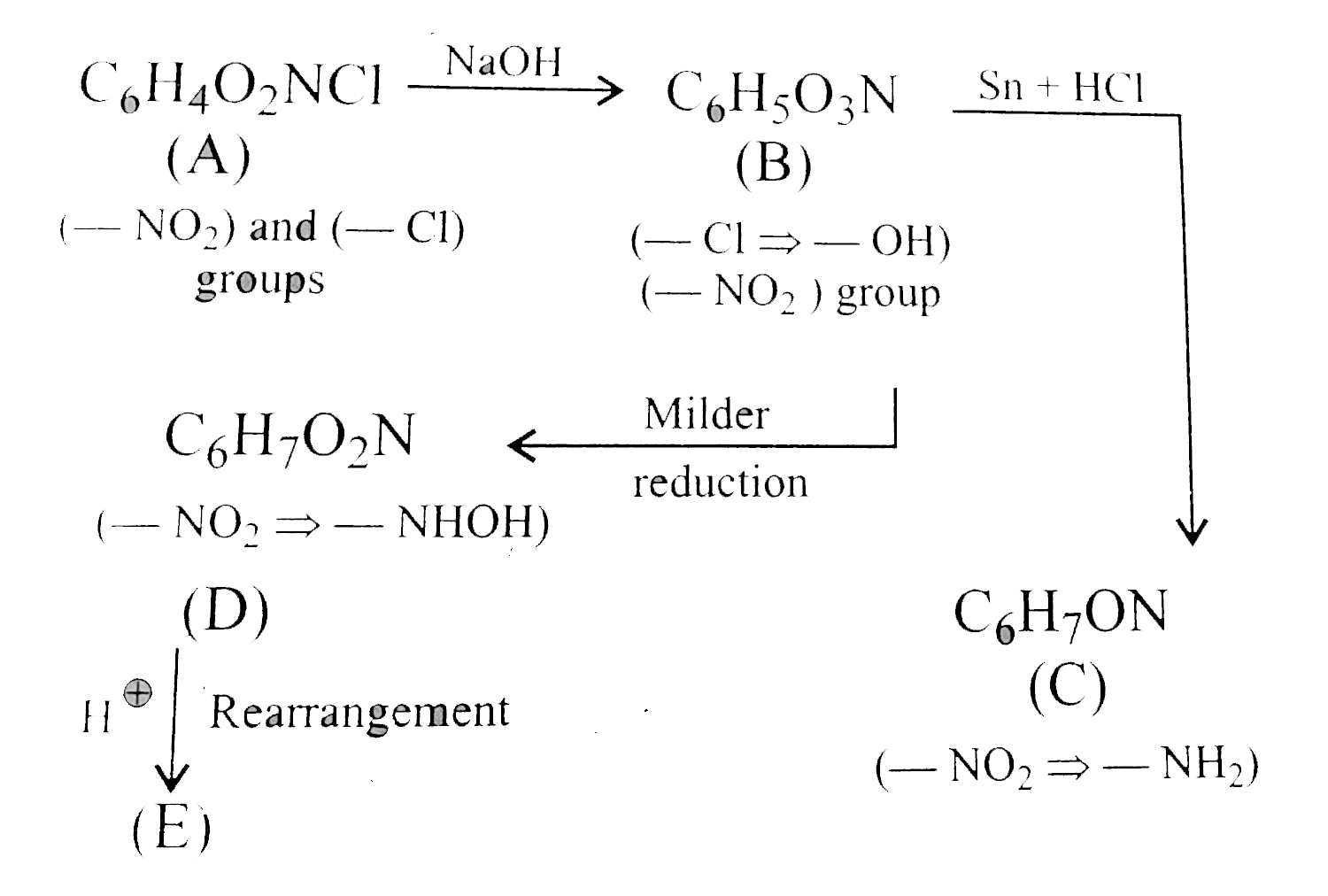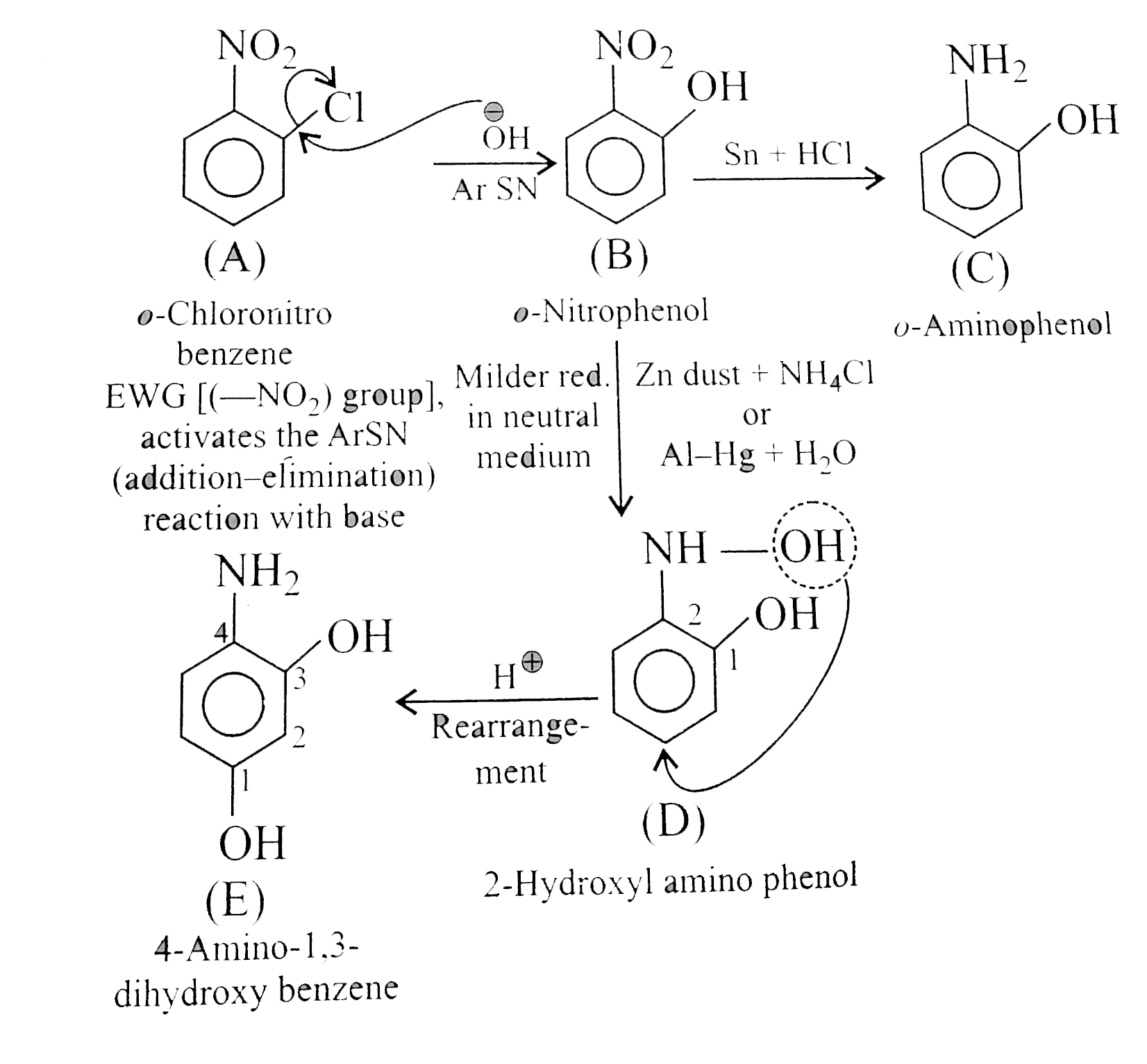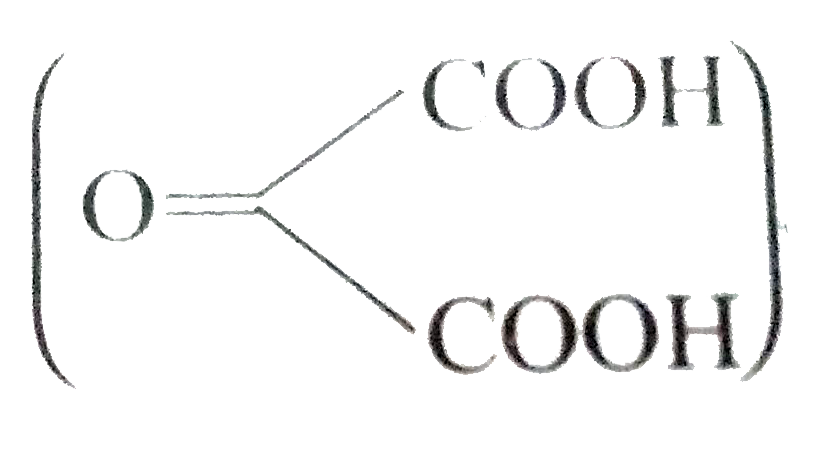An organci compound C6H4O2NCl(A) reacts with a,la,oo tp gove C6H5O3N(B). On reduction with tin and HCl,(B) gives C6H7ON(C) whereas on milder reduction it gives (D)C6H7O2N, which rearranges in the presence of a mineral acid to give a new compound (E). Identify the various compounds from (A), to (E).

(D) to (E) formation shows rerrangement of (−NHOH) group in which (OH) group from (NHOH) migrates to p− positon. So p− positon is vacant. Therefore, (−NO2) and (Cl) groups in (A) must be present at ortho-positons.
D.U in A=(2nC+2)+nCl−nN−nH2
=(2×6+2)+1−1−42=5∘
5D.U in (A) suggests benzene ring with 4.D.U in zenen and 1D.U in (NO2) group. (NO2) group (−NO2) and (−Cl) groups are at ortho-positon.

Topper's Solved these Questions
- AROMATIC COMPOUNDS AND ALKYL AND ARYL HALIDES BOOK - CENGAGE CHEMISTRYCHAPTER - AROMATIC COMPOUNDS AND ALKYL AND ARYL HALIDES EXERCISE - Exercises Concept Application Type
2 Videos
- AROMATIC COMPOUNDS AND ALKYL AND ARYL HALIDES BOOK - CENGAGE CHEMISTRYCHAPTER - AROMATIC COMPOUNDS AND ALKYL AND ARYL HALIDES EXERCISE - Exercises Concept Application
4 Videos
- AROMATIC COMPOUNDS AND ALKYL AND ARYL HALIDES BOOK - CENGAGE CHEMISTRYCHAPTER - AROMATIC COMPOUNDS AND ALKYL AND ARYL HALIDES EXERCISE - Exercises Subjective Type
4 Videos
- APPENDIX INORGANIC VOLUME 2BOOK - CENGAGE CHEMISTRYCHAPTER - APPENDIX INORGANIC VOLUME 2EXERCISE - Short Answer Type
179 Videos
- BIOMOLECULESBOOK - CENGAGE CHEMISTRYCHAPTER - BIOMOLECULESEXERCISE - Exercises Archives (Analytical And Descriptive)
8 Videos
Similar Questions
An organic compound A (C4H10O) reacts with HI giving a compound B (C4H9I) which on reduction gives n-butane. Oxidation of compound A gives C (C4H8O) and then an acid D (C4H8O2) . Deduce the structure of A,B,C and D.
View SolutionAn organic compound A (C3H5N) on boiling with alkali gives ammonia and sodium salt of an acid B (C3H6O2). A on reduction gives C(C3H9N) which with nitrous acid gives D (C3H8O). Give the structural formulae of A, B, C and D.
View Solution
Knowledge Check
The compound X(C3H6O) on oxidation gives a compound Y(C3H6O2) . The compound Y is
Apropanoic acidBbutyric acidCacetic acidDpropenoic acid
An organic compound C8H10 (A) on treatment with alkaline KMnO4 gives a compound C6H6O4. (B) which on strong heating gives C6H4O3 (C). The compound (D) in dry benzene in presen of AlCl3 gives compound (E). The compound (E) on treatment with PCl5 followed by reaction with H2/Pd,BaSO4 gives compound (F). Identify (A) to (F).
View Solutiona) Compound (A) C8H12 on oxidation gives an acid (B) C4H6O2. One molecule of compound (A) reacts with 3 mole of H2 in presence of platinum catalyst to give octane. Identify compound (A).

View SolutionCompound (A)(C8H12) on oxidation gives an acid B(C4H6O2). One mole of compound (A) reacts with 3mol of H2 in the presence of Pt catalyst to give octane. Identify compound (A).
View SolutionCompound (A)(C8H12) on oxidation gives an acid B(C4H6O2). One mole of compound (A) reacts with 3mol of H2 in the presence of Pt catalyst to give octane. Identify compound (A).
View SolutionAn organic compound (A) (C5H7OCl) reacts rapidly with ethanol to give (B) (C7H12O2). (A) also reacts with water to produce an acid which reacts with bromine to give (C ) (C5H8Br2O2). (B) on boiling with H2SO4 forms an acid (D). When (D) is oxidised with KMnO4 an acid (E ) (C4H6O3) is produced. On mild heating, (E ) gives (F) (C3H6O) which cannot be oxidised by ammoniacal AgNO3. Identify the compounds (A) to (F).
View SolutionAn organic compound (A) (C5H7OCl) reacts rapidly with ethanol to give (B) (C7H12O2). (A) also reacts with water to produce an acid which reacts with bromine to give (C ) (C5H8Br2O2). (B) on boiling with H2SO4 forms an acid (D). When (D) is oxidised with KMnO4 an acid (E ) (C4H6O3) is produced. On mild heating, (E ) gives (F) (C3H6O) which cannot be oxidised by ammoniacal AgNO3. Identify the compounds (A) to (F).
View SolutionCompound C8H9Cl(A) on treatment with KICN followedd by hydrolysis gives C9H10O2(B). Ammonium salt of (B) on dry disillation yiels (C), wyhich reacts with alkene solution of bromnine to give C8H141N(D). Another compound C8H10O(E) is obtained by the actions by the action of nitrous acid of (D) or by the action of aqueosu potacsh on (A),(E) on oxidation gives the inner anthydide C8H6O4(F) which gaves the inner anthdride C8H4O3(G) on heating Identify the various compounds (A) to (G).
View Solution
